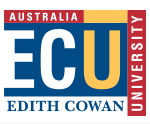Author Identifier
Erin Godecke
https://orcid.org/0000-0002-7210-1295
Emily Louise Brogan
https://orcid.org/0000-0001-9604-4558
Elizabeth Armstrong
https://orcid.org/0000-0003-4469-1117
Natalie Ciccone
Document Type
Journal Article
Publication Title
Topics in Stroke Rehabilitation
Volume
31
Issue
2
First Page
157
Last Page
166
PubMed ID
37415422
Publisher
Taylor & Francis
School
School of Medical and Health Sciences
RAS ID
61901
Funders
National Health and Medical Research Council / Tavistock Trust / Florey Institute of Neurosciences and Mental Health, The University of Melbourne
Grant Number
NHMRC Numbers : 1083010, 1132468, 1153236, 1063761, 1154273, 1154904, 1058635
Grant Link
http://purl.org/au-research/grants/nhmrc/1132468
http://purl.org/au-research/grants/nhmrc/1063761
http://purl.org/au-research/grants/nhmrc/1058635
http://purl.org/au-research/grants/nhmrc/1083010
http://purl.org/au-research/grants/nhmrc/1153236
Abstract
Introduction: There is limited evidence on the costs and outcomes of patients with aphasia after stroke. The aim of this study was to estimate costs in patients with aphasia after stroke according to the aphasia therapies provided. Methods: A three-arm, prospective, randomized, parallel group, open-label, blinded endpoint assessment trial conducted in Australia and New Zealand. Usual ward-based care (Usual Care) was compared to additional usual ward-based therapy (Usual Care Plus) and a prescribed and structured aphasia therapy program in addition to Usual Care (the VERSE intervention). Information about healthcare utilization and productivity were collected to estimate costs in Australian dollars for 2017–18. Multivariable regression models with bootstrapping were used to estimate differences in costs and outcomes (clinically meaningful change in aphasia severity measured by the WAB-R-AQ). Results: Overall, 202/246 (82%) participants completed follow-up at 26 weeks. Median costs per person were $23,322 (Q1 5,367, Q3 52,669, n = 63) for Usual Care, $26,923 (Q1 7,303, Q3 76,174, n = 70) for Usual Care Plus and $31,143 (Q1 7,001. Q3 62,390, n = 69) for VERSE. No differences in costs and outcomes were detected between groups. Usual Care Plus was inferior (i.e. more costly and less effective) in 64% of iterations, and in 18% was less costly and less effective compared to Usual Care. VERSE was inferior in 65% of samples and less costly and less effective in 12% compared to Usual Care. Conclusion: There was limited evidence that additional intensively delivered aphasia therapy within the context of usual acute care provided was worthwhile in terms of costs for the outcomes gained.
DOI
10.1080/10749357.2023.2229039
Creative Commons License

This work is licensed under a Creative Commons Attribution 4.0 License.


Comments
Kim, J., Sookram, G., Godecke, E., Brogan, E., Armstrong, E., Ellery, F., . . . Cadilhac, D. A. (2023). Economic evaluation of the very early rehabilitation in speech (verse) intervention. Topics in Stroke Rehabilitation, 31(2), 157-166. https://doi.org/10.1080/10749357.2023.2229039